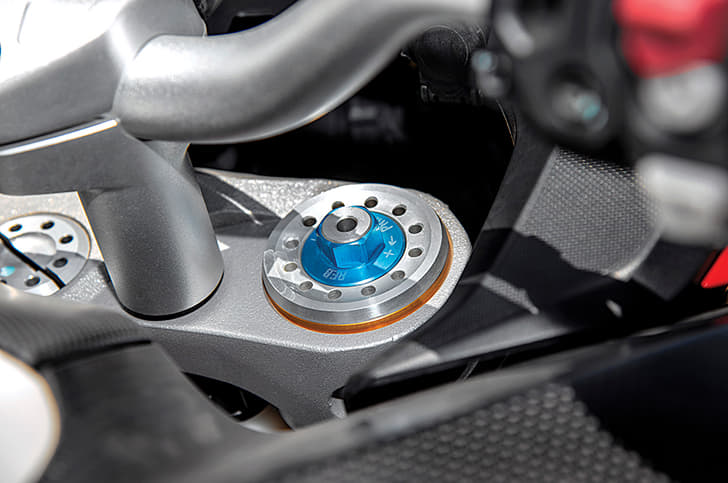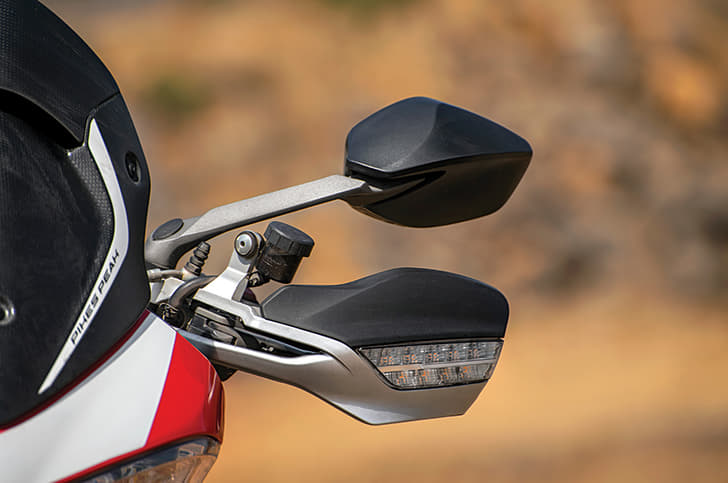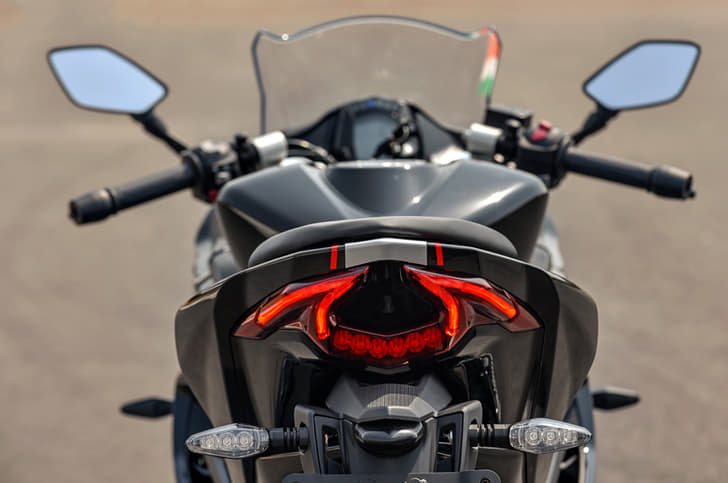
WHAT IS IT?
We now live in a time where 6-speed gearboxes are mainstream and 5-speed ones are considered outdated. However, there is still a segment in India (the biggest one, in fact) that still makes do with 4-speed transmissions. This is the 100-125cc category and it comprises buyers that aren’t fond of change, as they associate conventional mechanicals and even styling for that matter, to a certain extent, with sturdiness and dependability. Bajaj tried breaking the mould a few years ago with a 5-speed Discover. That wasn't successful, as fuel-conservative buyers shifted into top gear at a low speed in the hope of save fuel, causing the bike to lug – which is to be expected, but heavily disliked by the target audience, nonetheless. With the Platina 110 H-gear, Bajaj is hoping to educate the buyers by not calling the fifth – well, the fifth; but by calling it ‘highway gear’ instead.
WHAT'S NEW WITH THE ENGINE?
Over the years, the Platina has gone through a few minor cosmetic and mechanical revisions, with a big update coming only in December 2018, where it got CBS and the more-powerful 115.5cc air-cooled DTS-i engine from the Bajaj Discover. This is the same engine that you will find on the Platina 110 H-gear too, and it makes an identical 8.6hp and 9.81Nm of torque, which is a 0.7hp and 1.46Nm increase over the standard Platina's 102cc air-cooled DTS-i motor. It is, as a result, the third-most powerful bike in its segment – after the Hero Passion Xpro (9.51hp) and the TVS Victor 110 (9.6hp) – but has the highest claimed torque output among all its competitors.
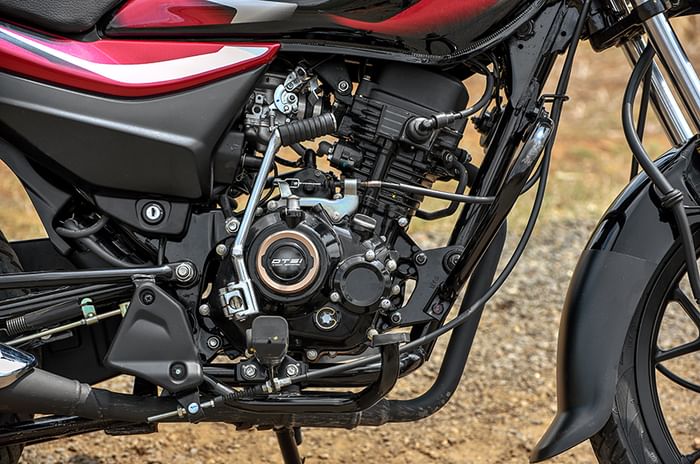
While we are on the topic, Bajaj has also claimed a realistic fuel-efficiency figure of 70-75kpl (official ARAI figure is 84kpl) which is similar to that of the lower-capacity 100cc Platina, thanks to the fifth gear the 110 comes equipped with. We’d suggest you wait for us to put it through our test cycle for an accurate figure. However, what we can tell you is how the motorcycle felt.
HOW DOES IT RIDE?
Thumb the starter and the engine fires up to a refined idle and revving it, surprisingly, didn’t introduce a significant amount of vibrations, instantly revealing that the company has worked on reducing NVH levels. The exhaust note is exactly what you’d expect a 115cc, four-stroke, single to sound like and it doesn’t entertain like the TVS Radeon does with its burble-y note. The next-biggest difference shows itself when you look for first gear – this Bajaj slicks into gear and doesn’t plonk into it like most other motorcycles in the segment. The shifts remain smooth as you shift up – or, in this case, down! The Platina carries over the all-down gear shift pattern from the older model and Bajaj said it has done this as it’ll make shifting easier for buyers who owned previous-gen models.
It is only them though, that will be able to adapt to this unique gear-shift pattern without miss-shifting about five dozen times. Once you do get the hang of it, you quickly begin to realise how the additional gear improves the motorcycle’s ability to cruise at a higher speed with much more ease. You can go all the way down to 40kph in fifth gear and build speed from there to a speedo-indicated 90kph at a decent pace, eliminating the need for a downshift. Interestingly, the gear ratios of gears one-four have remained unchanged from the 4-speed variant, and the fifth gear only comes in as an overdrive. The bike hasn’t lost out on its acceleration in effort for a higher top speed and fuel efficiency – something that plagued the 5-speed Yamaha RX back in the day. In fact, the fourth and fifth gear have almost the same top speed of around 95kph, however, when in in fifth at that speed the Platina a lot less stressed – which is exactly what it was intended for.
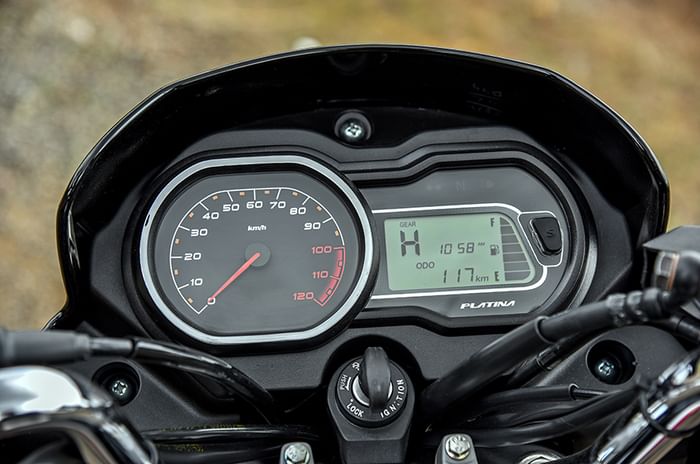
Bajaj has also revised the digi-analogue instrumentation cluster on the new motorcycle and it now displays not just the gear position, but also a gear-shift indicator that suggests when to upshift and downshift. The gear-position indicator is as accurate as can be, while the rpm-based gear shift indicator takes you the H gear as early as it can.
If you are close to 6ft tall, you will find yourself moving slightly backwards on the seat to get into a comfortable riding position, and thanks to the long seat the pillion won’t have trouble finding room. The handlebar is quite tall, putting you in an upright riding position; it's also highly unlikely to ever come in contact with your knees. While ‘heel’ bit of the heel-toe shifter requires a twist of the ankle that may not be in easy in full-sized riding boots, this can be hurdled by sitting a little further back on the seat.
On the move, you will enjoy the ride quality the motorcycle has to offer, it’s comfortable and not a victim of an overly soft suspension setup. The Platina 110 also runs a strengthened swingarm to help keep it stable at highway speeds, and works well in conjunction with the Ceat tubeless tyres to keep the bike stuck to the tarmac. While many commuters aren’t known to be the best at shedding speed, the front disc-brake-equipped version we rode did well. The CBS is effective, but if you press the foot-brake pedal hard enough, the rear locks easier than on a similarly equipped Honda motorcycle.
WHAT'S NEW WITH THE DESIGN?
On the design front, the new bike variant retains the current Platina’s styling, seeing as it was just recently updated. However, Bajaj has provided new decals inspired from the Discover line of bikes; and the Platina logo on the tank is now an emblem instead of a sticker. The seat also has a neat-looking ribbed pattern. Overall, though, the design does look a bit simple and old, and Bajaj should consider freshening up the bodywork soon.
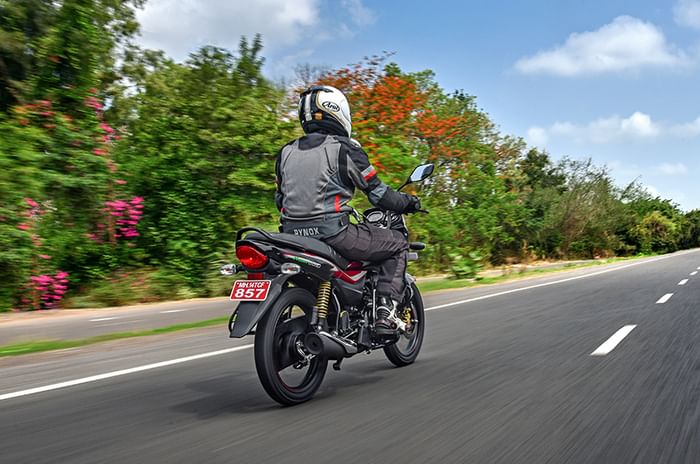
SHOULD I BUY ONE?
To sum up, the Platina 110 H-gear has a lot going for it. The powertrain package is almost class-leading and so is the ride quality. The motorcycle also has one of the most advanced instrument clusters at its price – Rs 53,376 for the drum-brake variant and Rs 55,373 for the disc-brake variant. At this price, the 110 H-gear costs Rs 5,000-7,000 more than the Platina 100 and Rs 3,000-5,000 more than the 4-speed Platina 110 – which is good value for the added performance. When compared to its competition, it sits closer to the middle – with the TVS Radeon and Star City below it and Hero and Honda offerings like the Splendor Pro, Passion Xpro and Dream Yuga sitting above.

















